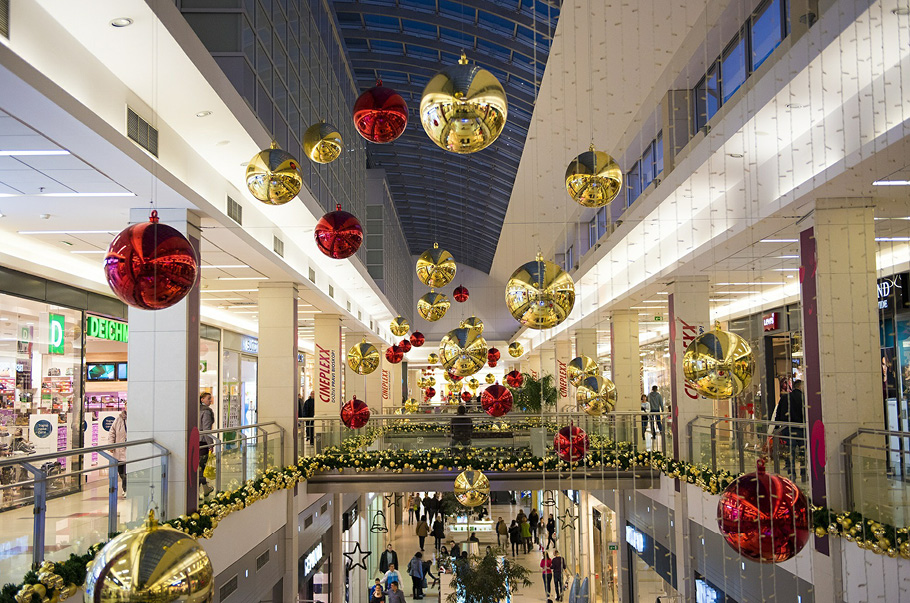Savills’ European Investment Outlook 2022 identifies best-performing supermarkets and retail warehouses as the most sought-after investment deals, followed by convenience stores, commuting hubs and high street units in strong footfall areas.
The report forecasts that prime retail warehouse yields will compress further by 5-10bps on average during the next 12 months, following a 4bps compression in the average prime retail warehouse yield in the last two quarters (to 5.2%).
It added that shopping centre yields may start stabilising during 2022, after a 3bps increase to 5.3%.
These retail trends are unfolding as investment into European commercial and residential property is on the rise, reaching €78.9bn in Q3 - the highest level recorded in a third-quarter over the past five years. Meanwhile €201.6bn of investment was transacted during the first three quarters of 2021 - a 13.5% jump on last year and a 7.7% increase on the past 5-year average.
Savills estimates that the end-year volume will be around €288bn, a 9% increase year-on-year, and a similar total volume of around €290bn in 2022.
“These are some stand out figures given the current circumstances,” said Oliver Fraser-Looen, joint head of Regional Investment Advisory EMEA, Savills. “Strong investment activity will continue until the end of the year.”
The UK, Germany and France will remain the preferred investment destinations, but as increasing amounts of cross-border capital is invested in the Nordics, the region’s share in the total European volume could continue to expand.
Despite growing deal volumes, investors will remain focussed on quality in 2022, particularly in the office sector, and with greater ESG imperatives ahead, property owners will be forced to renovate stock to achieve greener standards or repurpose buildings to embrace social values.
Leila Packett, associate director, Regional Investment Advisory EMEA, Savills, said: “This will eventually provide some opportunities for value-add investors. Yet, we do not expect a significant return of the value-add investors at least until 2023, after a significant repricing in secondary asset classes. Historically, we have seen the interest of value-add investors rising in periods when the prime and secondary office yield gap is above 90bps, and during Q3 2021 it was 88bps.”
Savills also said greater portfolio diversification would be a theme for years to come, in terms of assets, locations and strategies. The logistics and living sectors will also remain highly sought-after in 2022 and supply and demand imbalances in both sectors will create rental growth.
But interest in the alternative sector will further increase as investors seek higher returns in a very low yield environment, said the firm.
“Hospitals, universities, data centres, life sciences and urban farming are slowly growing on investors' radars,” said Lydia Brissy, director, Europe research, Savills. “We expect these sectors to gradually emerge as an asset class in the next five years.”
Similarly, prime yields may harden by up to 15bps on average in European logistics, while the living sectors may see a 5-10bps yield compression.
Michał Stępień, Associate, Investment, Savills Poland, said: “The resumed investor activity is also evident in Poland, where investors follow global trends and growth patterns, looking for stable returns and growth opportunities in order to protect the capital against inflation, as well as for ESG compliance. Industrial is still in the spotlight with offices right behind. There is also a recovering interest in retail, with a particular focus on convenience, standalone supermarkets and retail warehousing, nevertheless, due to limited supply of relevant investment product, the retail sector accounts for less than 14% of the investment volume. A balanced position of shopping centers and more attractive shopping centre yields are conducive to the return of investment capital to the retail sector, however, rising costs of energy and anti-inflation measures of the Central Bank may slow down consumer demand next year, which may adversely affect the turnover of popular chain stores and extend the ‘wait-and-see’ approach to this asset class.”












